Chat slang is no longer just about the kids; it’s not even about the rest of us ‘getting down with the kids.’ It hasn’t been for quite a while!
Hard to believe, but texting has been around for 23 years
The first text message was sent in 1992 by a 22-year-old test engineer from his PC to the Vodaphone network in the US. Chat slang — the ubiquitous LOLs, TTYLs and JKs — now wraps its saucy paws around many of the 350 billion global text (SMS) messages we send monthly. According to the stats, more than 15% of those messages are in a business context.
When it comes to chat slang, we make it up as we go
Almost every text we send has the potential in it somewhere for abbreviation and/or acronym. My mum (in her eighties) has taken to chat slang like the proverbial duck to water. She signs her texts (even Christmas and birthday cards) YFM (Your Favourite Mother; not that I have another mother, LOL). She wanted a picture of my daughter, a nurse, in her hospital scrubs and sent her a text that said: “Can u take a selfie?” (aka a photograph of self).
My daughters rarely answer their phone, but they respond to text and pepper their responses with emojis. My old high school pal regularly texts just one word to me: “Chat?” She doesn’t mean shall we pick up the phone and have a conversation. She means is it a good time to have an extended catch-up session, via text? If I say: “sorry, not now,” she’ll reply: kk 2moro TTYL. A successful chartered accountant who runs her own company, she’s one smart cookie, but texting brings out her impish, casual side.
Whether — as many continue to despair — we’re killing the English language with chat slang, is a moot point. WCYD?
That’s what chat slang is: casual speak. And it is impish. Admit it! As grown ups, the impish aspect can be fun. The abbreviation of words and phrases and the use of acronyms saves time (some grammar sticklers maintain it’s a product of laziness); but necessity, as usual, is the mother of invention. Where’s the space to have a formal or in-depth conversation on a screen like that of the current iPhone, which measures 138 cm x 67 cm? This dictates pithiness in what we say. Whether — as many continue to despair — we’re killing the English language with chat slang, is a moot point. WCYD (What Can You Do)?
LOL originally meant laughing out loud, a text response to a joke. Nowadays, it’s more like the shoulder shrug in a face-to-face conversation, a sort of non sequitur. It should follow something funny. It often doesn’t. JK (Just kidding); 2 (to, or too); 4 (for); OMG (Oh my gosh or oh my god); c u soon (see you soon), are old hat. We’ve progressed. NetLingo’s list of chat acronyms and text shorthand is mind boggling.
Is chat slang good for business?
What about in a business context? Is chat slang the new business casual? I saw a professional newsletter recently that ended with: BYOD (bring your own device) to the convention. Bet a lot of those business folks had to read it twice, thinking: Is that a D or a B on the end? Should chat slang be used in formal business writing? Well, then it would no longer be formal writing. What about a business email or text?
You’re late for a meeting with a client, so you text: gtbl8. C u in 20 (going to be late, see you in twenty minutes). Is that acceptable business etiquette? Much depends on the nature of the relationship you have with your client. Mostly, it’s a common sense approach, but if you’re wondering, there are a slew of websites out there with advice on business texting etiquette (see below).
What about emojis?
We all love emojis (aka emoticons), the colourful icons that we reach for in both personal and business contexts: Want to say ‘I love you,’ then the googly eye icon, a red heart and a female sheep icon work well, whether you’re a mushy 8-year-old or a mushy 80-year-old. The sheer number of icons available for phones, tablets and computers is exploding. Obviously, someone’s seeing a need. What about in business? Seems we’re using them here too …
Emojis speak volumes in email and text. You’re angry about something: insert a mad face. Sad: insert a sad face. Embarrassed: insert the face with the bright red cheeks. Kidding about something and want your boss to know that you’re kidding (we all know from experience how easily texts and emails can be misinterpreted), insert a plain old happy face, or maybe two, for emphasis. Pleased with the job your client has done, you add a happy face in your thank you. Emojis often change the entire mood of an email.
Is proper grammar in hiding?
So where is chat slang taking us? Is proper grammar in hiding? Should we despair? Since when is OMG the appropriate response to a hangnail and the onset of a hurricane? When did my favourite mother start talking about selfies?
The experts seem to think that chat slang is simply a reflection of the more casual way we live today. Maybe we can start to worry when the president of the multinational we work for sends us a text before our presentation: DFTBA! (don’t forget to be awesome!) We should really worry when the government rejects the business expenses we reported on our tax return with an lmbo (laughing my butt off) or lshic (laughing so hard I’m crying).
Slang has always been proper grammar’s edgy cousin
Slang has always been proper grammar’s edgy cousin. Like jargon or colloquialism, slang hangs around language, a thorn in formality’s side. I can’t imagine reading an entire book or article where the content is exclusively acronyms and abbreviations. Is that even possible? (Argument enough for why we really don’t need to worry too much about where chat slang is going!) To be maddeningly esoteric: Chat slang is what it is. We no longer speak the language the way Shakespeare spoke it (the bard was a huge fan of slang). Language evolves, it changes with the times. Slang, jargon and colloquialism are always along for the ride. So, 4 now …
“2 b or not 2 b”: the future of chat slang is TBD.
What’s your opinion on chat slang? Should we use it or lose it? Does it belong in a business context? LMK (Let Me Know).
Read more …
7 Rules of Texting Etiquette Every Professional Needs to Know
Best Text Messaging Apps of 2015
Other side of the coin reading:
‘Crystal’ software: No chat slang or emojis here! A Gmail plug-in that gathers data on your personality then helps you compose formal emails in your own tone of voice: Can personality data change the way we communicate with each other?

